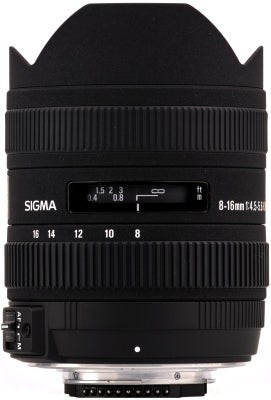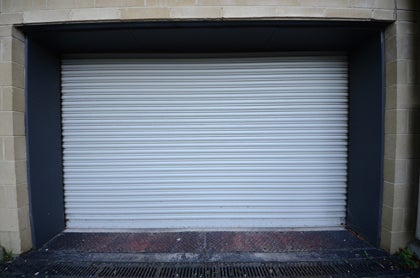Sigma 8-16mm f/4.5-5.6 DC Review
Sigma 8-16mm f/4.5-5.6 DC Review
With two 10-20mm lenses already within the Sigma stable, how exactly does this superwide offering fit into the line-up?

Verdict
Pros
- Excellent 8mm performance
Cons
- Weaker 16mm performance
Key Specifications
- Review Price: £630
Sigma has embraced the ultra-wide sector, offering 4.5mm, 8mm, 10mm and 15mm prime lenses as well as 10-20mm zooms in variable aperture (f/4-5.6) and fixed aperture (f/3.5) versions and a 12-24mm zoom. There is also this new 8-16mm zoom.
Though the 8-16mm is limited to use with APS-C sensors (only Sigma’s 8mm and the 12-24mm are full-frame lenses) this is not a problem given that the 8-16mm is also much cheaper than the 8mm prime.
The ultra-wide zoom has very good handling characteristics thanks to a lovely balance and fully internal focusing that leaves the focusing ring undisturbed in AF mode but with the option to apply manual adjustments. The focusing ring is towards the front of the lens with a similar-width zoom ring at the rear. A window showing the focused distance separates the two rings and a focus-mode switch is behind the zoom ring. At the front is a fixed, petal-type lens hood. Filters cannot be fitted beyond the front element and neither is there a gelatine holder at the rear.
It has a f/4.5-5.6 maximum aperture but when shooting interiors it would have been nicer to have had another f-stop (which is provided by Sigma’s 10-20mm f/3.5 lens at lower cost). The fixed lens-hood does a good job of protecting the domed front element and the lens is long enough for there to be little danger of fingers straying into the gaps between the hood’s petals. Focusing is brisk and reasonably quiet.
There was some variation in the MTF lab results when the lens was tested at very close range (as it might be used to highlight a small foreground object against a panoramic backdrop) but this issue faded away as soon as the object distance was increased.
The zoom is at its best when set to 8mm and slightly weaker at 16mm, which is the right way around for this lens to behave. At the 8mm setting it produces MTF results comfortably above 0.25 cycles-per-pixel from wide-open down to f/11 but at 16mm it only nudges above this level between f/8 and f/16. There is some barrel distortion at 8mm, switching to pincushion distortion at 16mm, but the bigger challenge when using a lens like this is always the need to keep the camera perfectly level to avoid converging lines.

Sample images








Verdict
This lens doesn’t really sparkle in the same way as Sigma’s 10-20mm f/3.5. If the last 2mm aren’t crucial, the fixed-aperture zoom is probably the better bet, but at least the 8-16mm lens is there if you need it.
Trusted Score
Score in detail
-
Value 9
-
Design 10
-
Image Quality 9
-
Features 9

